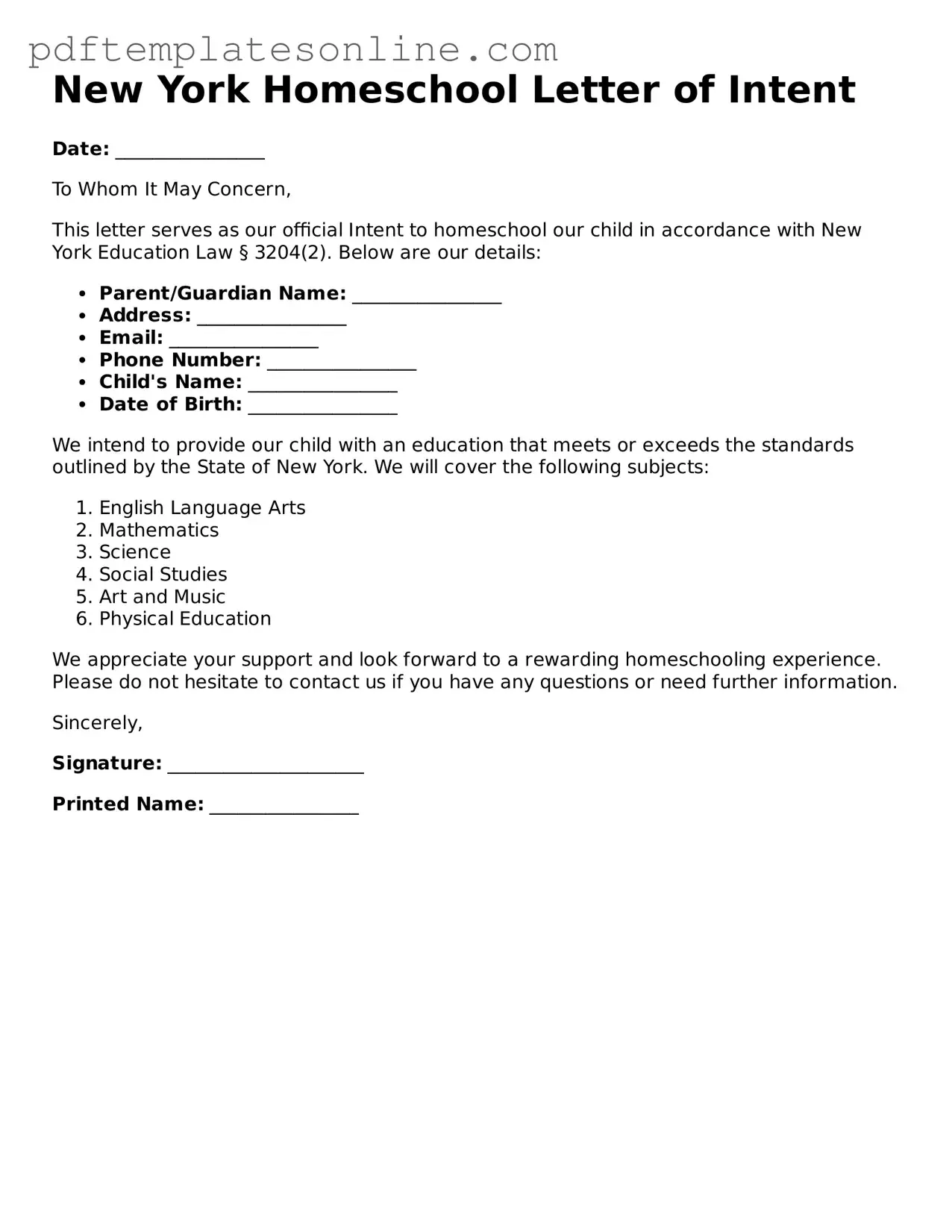Filling out the New York Homeschool Letter of Intent can be a straightforward process, but many families make common mistakes that can lead to delays or complications. Understanding these pitfalls can help ensure a smoother homeschooling experience. Here are eight mistakes to watch out for.
One frequent error is not including all required information. The form requests specific details about the student, including their name, age, and grade level. Omitting any of this information can result in the form being returned or rejected. It’s essential to double-check that all fields are filled out completely.
Another common mistake is failing to submit the form on time. New York requires that the Letter of Intent be filed within 14 days of starting homeschooling. If you miss this deadline, you may face unnecessary complications. Mark your calendar to ensure you meet this important timeline.
Some families mistakenly assume that the form is a one-time submission. In reality, you must submit a new Letter of Intent each year. This requirement is often overlooked, leading to confusion and potential issues with compliance. Keep track of your annual submissions to avoid any lapses.
People often neglect to review the instructions provided with the form. Each year, guidelines may change, and it’s crucial to stay updated on any modifications to the requirements. A quick read through the instructions can save you from making avoidable mistakes.
Another common oversight is not providing an educational plan. While the Letter of Intent itself does not require a detailed curriculum, mentioning your educational philosophy or approach can strengthen your submission. This additional information can demonstrate your commitment to providing a quality education.
Many families also forget to keep a copy of the submitted form. Having a record of what you submitted is vital in case any questions arise later. It’s a simple step that can provide peace of mind and serve as a reference if needed.
Some individuals mistakenly assume that the form is only for children who are struggling in traditional schools. This misconception can lead to unnecessary stress. The Letter of Intent is for any family choosing to homeschool, regardless of their child’s previous educational experiences.
Lastly, failing to communicate with local school officials can be a significant oversight. After submitting your Letter of Intent, it’s a good idea to reach out to your local school district to confirm they received it. This proactive step helps ensure that you are on the right track and can address any potential issues early on.
By being aware of these common mistakes, you can navigate the New York Homeschool Letter of Intent process more effectively. Taking the time to prepare and review your submission will help you embark on your homeschooling journey with confidence.
